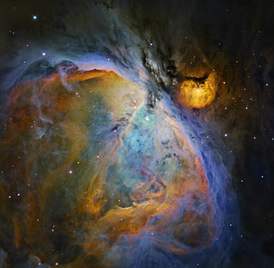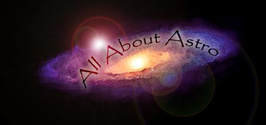
I thought I would share two images taken this past week over several nights, showing data that was collected REMOTELY the Conley Observatory at the Comanche Springs Astronomy Campus near Crowell, Texas, a “roll-off roof” observatory that was completed this past year.
I present to you Messier 42, the Orion Nebula. “M42” is one of the oldest known deep space objects in the night sky, recognized by observers since antiquity. A stellar nursery of new star birth, the stars at the core of the structure, known as “the trapezium,” are responsible for ionizing the surrounding gases (making them glow). Perhaps most amazingly, you are looking back in time 1,344 years ago. (!) In other words, the light captured in this image took 1,344 years, travelling at the speed of light, to reach us.
Both images (see the Gallery) use special filters to capture the very thin spectral lines of particular ioned gases which are then “mapped” to traditional color channels, popularized by the Hubble Space Telescope.
The first image is a “bicolor image” where oxygen data is mapped to blue, hydrogen is assigned to green, and red is a 70/30 blend of the two. This does result in a limited palette of colors, which I find less dynamic and to be a poorer overall aesthetic. However, the advantage is that the distinction between the hydrogen and oxygen gases is very evident. There is a very well defined distinction between gases where the bluish oxygen areas appear to float in front of the dominant yellowish hydrogen background.
The second image adds a true third channel of red data, which is ionized sulfur. Hydrogen is still green and oxygen is still blue. Therefore, the colors blend together to give a huge palette of hues, where the blended colors like orange, teal, and yellow represent a mixture of the three gases. In my opinion, it’s prettier; and it yields a true “Hubble” palette. (Google “Hubble Pillars of Creation” to see a familiar image using the same type of color mapping.)
Even so, the distinction between oxygen and hydrogen areas is still very apparent.
The atmospheric “seeing” wasn’t very stable for these images - which is why they put telescopes in space - meaning it’s not as sharp as I’d like. I am also troubleshooting some optical alignment issues which does degrade performance. Even so, it’s an image worthy of being shared.
This is 8 hours of total data (3 hours Ha + 3 hours OIII + 2 hours SII) shot with a 12.5” RCOS Ritchey-Chretien atop a Software Bisque Paramount ME mount. The camera is an FLI Proline 16803 using 3nm AstroDon spectral band filters.
I hope you found the images inspirational and educational!
I present to you Messier 42, the Orion Nebula. “M42” is one of the oldest known deep space objects in the night sky, recognized by observers since antiquity. A stellar nursery of new star birth, the stars at the core of the structure, known as “the trapezium,” are responsible for ionizing the surrounding gases (making them glow). Perhaps most amazingly, you are looking back in time 1,344 years ago. (!) In other words, the light captured in this image took 1,344 years, travelling at the speed of light, to reach us.
Both images (see the Gallery) use special filters to capture the very thin spectral lines of particular ioned gases which are then “mapped” to traditional color channels, popularized by the Hubble Space Telescope.
The first image is a “bicolor image” where oxygen data is mapped to blue, hydrogen is assigned to green, and red is a 70/30 blend of the two. This does result in a limited palette of colors, which I find less dynamic and to be a poorer overall aesthetic. However, the advantage is that the distinction between the hydrogen and oxygen gases is very evident. There is a very well defined distinction between gases where the bluish oxygen areas appear to float in front of the dominant yellowish hydrogen background.
The second image adds a true third channel of red data, which is ionized sulfur. Hydrogen is still green and oxygen is still blue. Therefore, the colors blend together to give a huge palette of hues, where the blended colors like orange, teal, and yellow represent a mixture of the three gases. In my opinion, it’s prettier; and it yields a true “Hubble” palette. (Google “Hubble Pillars of Creation” to see a familiar image using the same type of color mapping.)
Even so, the distinction between oxygen and hydrogen areas is still very apparent.
The atmospheric “seeing” wasn’t very stable for these images - which is why they put telescopes in space - meaning it’s not as sharp as I’d like. I am also troubleshooting some optical alignment issues which does degrade performance. Even so, it’s an image worthy of being shared.
This is 8 hours of total data (3 hours Ha + 3 hours OIII + 2 hours SII) shot with a 12.5” RCOS Ritchey-Chretien atop a Software Bisque Paramount ME mount. The camera is an FLI Proline 16803 using 3nm AstroDon spectral band filters.
I hope you found the images inspirational and educational!
 RSS Feed
RSS Feed
